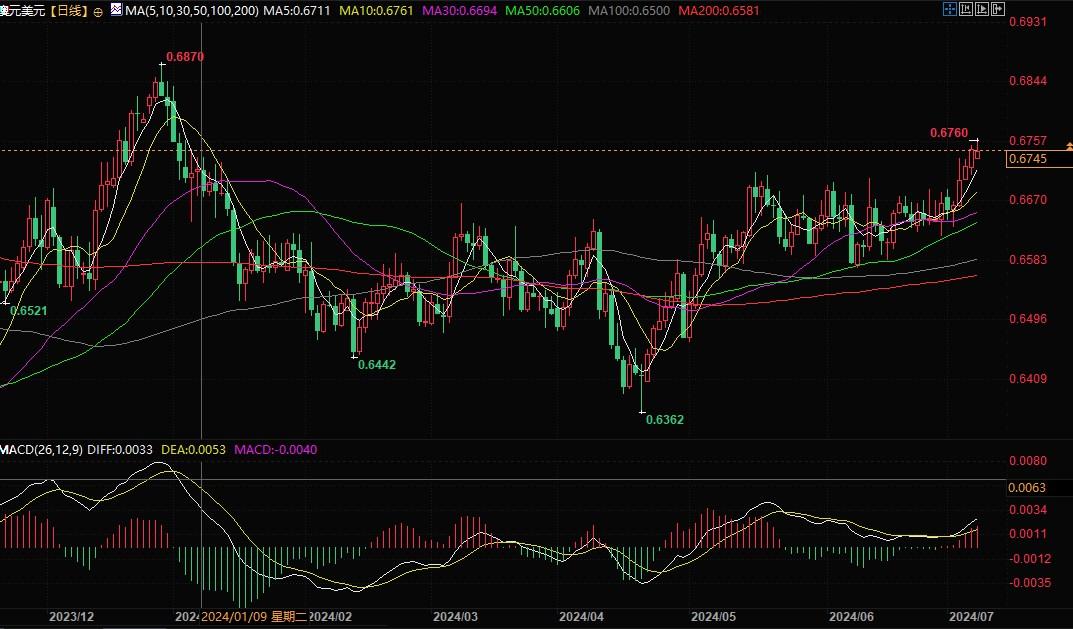The hawkish sentiment of the Australian Federal Reserve has boosted the Australian dollar, and if it breaks through 0.6755, it will test 0.6800!
The Australian dollar regained lost ground, despite an improvement in risk aversion on Monday. However, the renewed demand for the US dollar has put pressure on the Australian dollar against the US dollar. The Australian dollar has been supported by sustained high inflation, strong retail sales, and service sector PMI, which have prompted the Reserve of Australia to postpone possible interest rate cuts.
The minutes of the Federal Reserve of Australia's June meeting indicate that policymakers emphasize the need to remain vigilant about the risk of upward inflation. Policy makers point out that a significant increase in prices may require a significant increase in interest rates. Although interest rates remained stable in June, the CPI in May unexpectedly rose from the previous 3.6% to 4.0%, triggering a warning from the Federal Reserve of Australia that it may raise cash rates to 4.6% in September.
The data released last Friday showed that the US dollar may face challenges due to a slowdown in employment growth in May. Although the non farm payroll (NFP) in June exceeded market expectations, the growth rate slowed down compared to May. In addition, the unemployment rate slightly increased in June. This may lead traders to speculate that the Federal Reserve may lower interest rates as soon as possible.
The Federal Reserve Watch Tool of the Chicago Mercantile Exchange (CME) shows that the interest rate market reflects a near 70.7% likelihood of the Fed cutting interest rates in September, up from 64.1% a week ago.
The Australian dollar was trading around 0.6740 against the US dollar on Monday. Market analyst Akhtar Faruki said that daily chart analysis shows that the AUD/USD breaking through the upward wedge below indicates a potential bearish reversal. In addition, the Relative Strength Index (RSI) stabilized slightly below 70 on the 14th. The downward movement of the relative strength index indicates that the Australian dollar may undergo a correction against the US dollar.
He believes that the AUD/USD may test the lower boundary of an upward wedge around 0.6755, and then test the psychological level of 0.6800 close to the upper boundary of the wedge.
On the downward trend, the AUD/USD may look down at the 50 day moving average (currently at 0.6639).

Tips:This page came from Internet, which is not standing for FXCUE opinions of this website.
Statement:Contact us if the content violates the law or your rights
